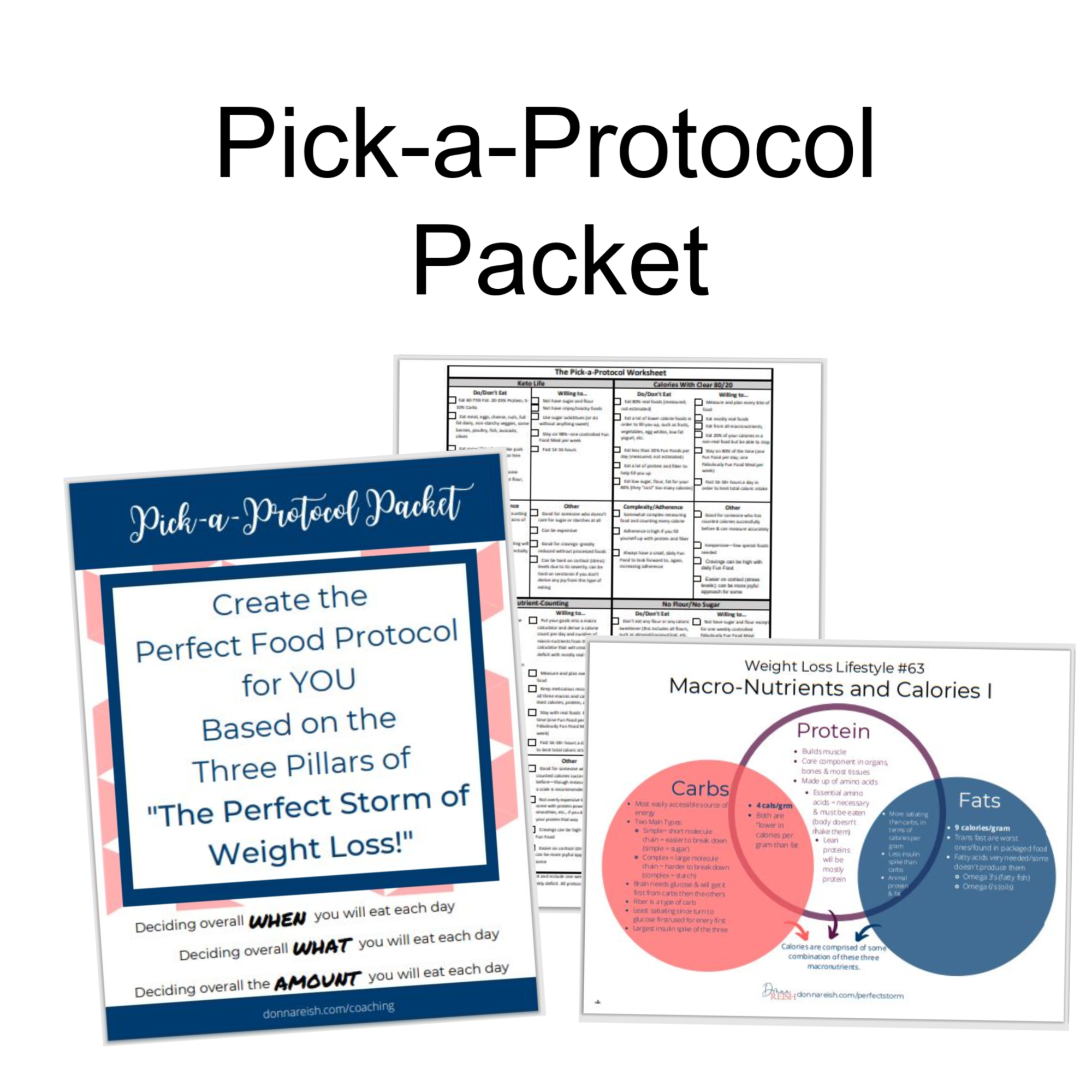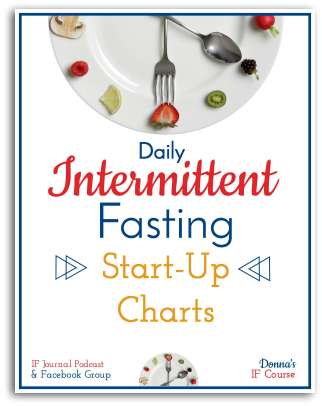
Think-Feel-Eat Episode #31: What I Already Know
Hi! I’m Donna Reish, IF teacher, weight loss coach, blogger, and half of “The Minus 220 Pound Pair” as my husband and I have lost over 220 pounds together (160 of that in the past couple of years through the Weight Loss Lifestyle habits and strategies I teach!).
In this episode, I present ten things that I know for sure! (And I encourage you to consider what you already know for sure as well!)
We know more than we think we know!
This is what I tell my sixty kindergarten through twelfth grade students every day! It is only in realizing what we know that we can see how that information can help us. And so it is with weight management, health, fitness….all of it.
In this episode, I discuss ten things that I know for sure—and elaborate on how these things are helping me reach my goals.
Here are a few of them!
1) I know for sure that when I have sugar more than a couple times a week, my eating is way harder to control.
2) I know for sure that when I fast under seventeen hours, I have too many eating hours.
3) I know for sure that I can’t beat myself up down to my goal weight. (See Think Feel Eat #2 and #3 for details on this one!)
4) I know for sure that my Thoughts cause my Feelings….and my Actions are based on those Feelings. Bottom line: Control my Thoughts, control my Actions! (See Think-Feel-Eat #1 for details on this one!)
5) I know for sure that I can’t outrun a fork. It takes unbelievable amounts of exercise to counteract overeating.
6) I know for sure that I only lose weight by eating less food than my body size currently needs/eating the amount of food that is closer to my goal weight. Period. How I make this happen is still somewhat unknown as I get closer to goal (the exact protocol that makes this happen consistently).
Let’s know what we already know…and use it. Let’s learn more so that we can reach our goals!
Join the Drop 8 Pounds by Christmas challenge today—we start on October 1st!
a. Join at the blog to get all of the email updates and training
Watch the short info video here
Find all of my episodes, outlines, and articles for my two weekly broadcasts:
(1) Weight Loss Lifestyle broadcast (formerly Donna’s Intermittent Fasting Broadcast)
Sign up for my free webinar: https://intermittentfastingwebinar.com
Think Feel Eat Outline 31 What I Already Know
A. Things I Already Know for Sure!
- I know for sure that when I have sugar more than a couple times a week, my eating is way harder to control.
- I know for sure that when I fast under seventeen hours, I have too many eating hours.
- I know for sure that I can’t beat myself up down to my goal weight. (See Think Feel Eat #2 and #3 for details on this one!)
- I know for sure that my Thoughts cause my Feelings….and my Actions are based on those Feelings. Bottom line: Control my Thoughts, control my Actions! (See Think-Feel-Eat #1 for details on this one!)
- I know for sure that I can’t outrun a fork. It takes unbelievable amounts of exercise to counteract overeating.
- I know for sure that I only lose weight by eating less food than my body size currently needs/eating the amount of food that is closer to my goal weight. Period. How I make this happen is still somewhat unknown as I get closer to goal (the exact protocol that makes this happen consistently).
- I know for sure that 80/20 eating only works when it is REAL and measured (not estimated). (See Think-Feel-Eat #15 for more on this!)
- I know for sure what it takes to maintain my 100 pound loss from the last decade. I’ve been doing it for months—it isn’t easy, but I know how to do it!
- I know for sure that certain foods trigger me to overeat. I know what these are.
- I know for sure that when I plan my food ahead of time each day, I am more likely to stay on it!
B. NEW! Free Weight Loss Challenge Group! Starting October 1st!
1. Drop 8 Pounds by Christmas!
2. Continual trainings!
a. Weekly formal videos sent via email
b. Live Q and A Sessions in the FB group
c. Pop up video trainings in the FB group
d. Weight loss coaching
e. Tools, tricks, and more!
f. Help with emotional eating
g. Thought work- Think-Feel-Eat!
h. Accountability threads in the FB group
3. Join today—we start on October 1st!
a. Join at the blog to get all of the email updates and trainings
b. Join the FB group!
4. IF Course for October! Starts October 6th! Intermittentfastingcourse.com


























